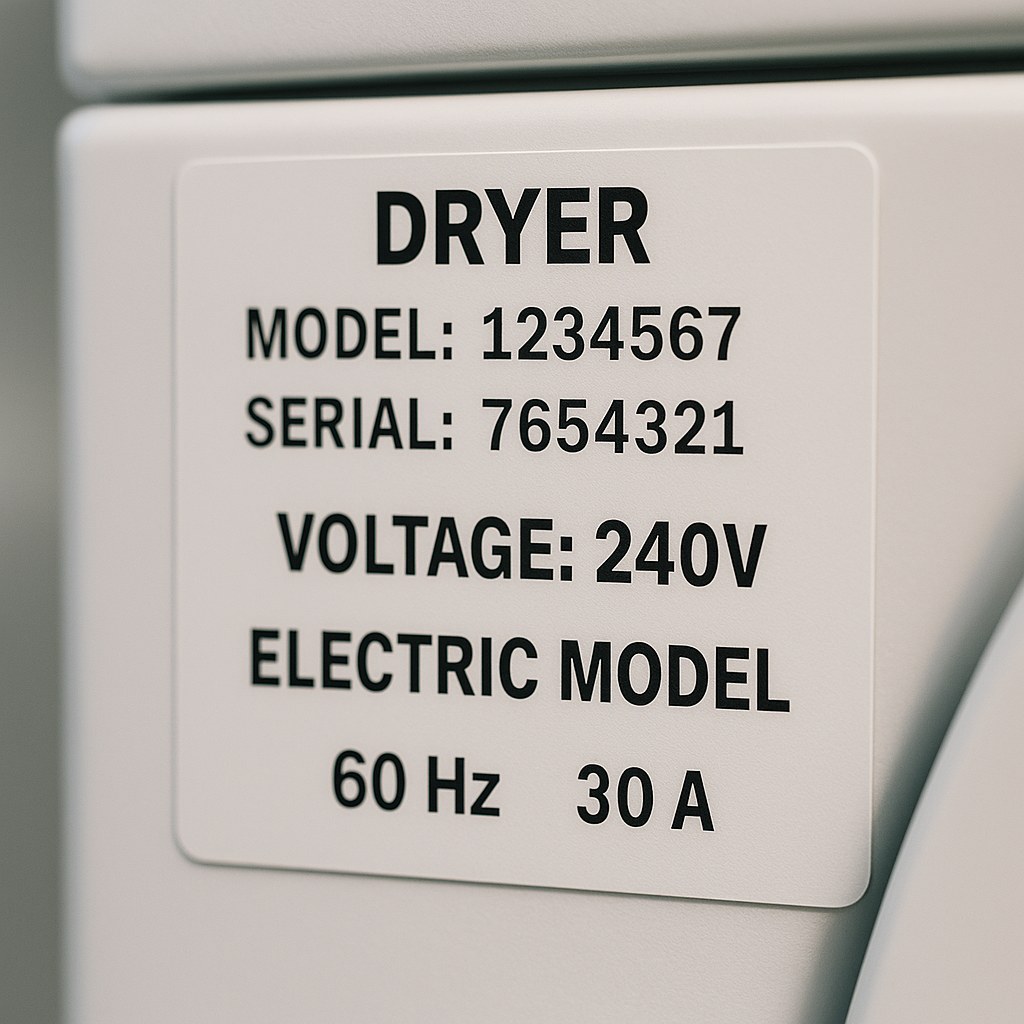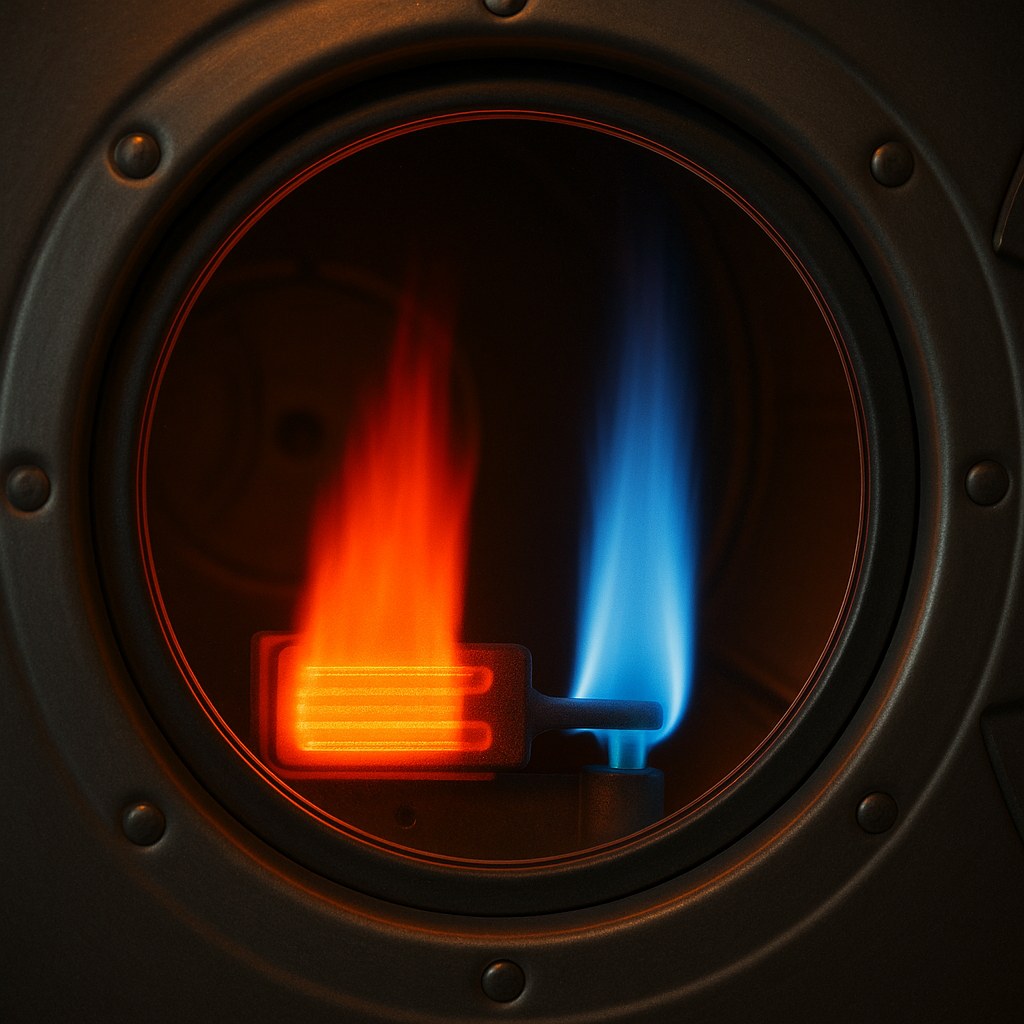How to Fix a Dryer That Doesnt Heat
Loading content…
Loading content…
There are few laundry day frustrations quite like opening your dryer expecting warm, fluffy clothes, only to find a cold, damp pile. A dryer that tumbles but doesn't heat is a surprisingly common issue, but the good news is that you can often fix it yourself without an expensive service call.
Whether you have an electric or a gas model, the problem usually boils down to one of a few key areas: power supply, airflow, or a faulty heating component. It might seem intimidating, but with a little guidance, you can play detective and get your dryer working again.
In this comprehensive guide, we'll walk you through the process step-by-step, just like we're on the phone with you. We'll help you diagnose the problem and, in many cases, fix it yourself in under an hour.
Before we can start troubleshooting, we need to know what kind of dryer we're working with. The way a gas dryer creates heat is completely different from an electric one, so this first step is crucial. Don't worry, it’s easy to find out.

Now that you know your dryer type, let's follow the right path to get it heating again.
Electric dryers use a powerful heating element, similar to the coils in an oven, to generate heat. When they fail to heat, the problem is almost always related to either the power supply or one of the heating components.
This is the most common culprit and the easiest fix! Electric dryers require 240 volts of power to run the heating element. This is supplied by a double-pole circuit breaker in your home's electrical panel.
Here's the tricky part: sometimes, only one of the two poles in the breaker will trip. When this happens, the dryer will still have enough power (120 volts) to turn on and tumble the drum, but it won't have the full 240 volts needed to power the heating element.
How to Fix It:
If resetting the breaker didn't work, we need to confirm the outlet is providing the correct power.
If you're comfortable and have a multimeter, you can test the outlet itself. Safety Warning: This involves working with live electricity. Please use caution and wear insulated gloves.
If your reading is low (around 120V) or zero, the problem lies with your home's electrical supply, not the dryer. In this case, you should contact a qualified electrician to investigate.
If the breaker is on and the outlet has power, the issue is likely a failed component inside the dryer. The most common failures are the heating element, the thermal fuse, or the high-limit thermostat. These parts are designed to shut off the heat to prevent overheating, but sometimes they can fail and break the circuit permanently.
To test them, you'll need your multimeter set to the "Continuity" setting (it usually has a symbol that looks like sound waves). Continuity means there's a complete path for electricity to flow.
How to Test the Components:
If you find a failed component, you've found your problem! You can order a replacement part online using your dryer's model number. If you're not comfortable replacing it yourself, this is the perfect time to call a professional.
Gas dryers create heat using a burner assembly, much like a gas furnace. The troubleshooting process is quite different from an electric model.
First, let's make sure the gas is on and the igniter is working.
If you see the igniter glow and the flame light, but your clothes still aren't drying, the problem is almost certainly a clogged vent. If the igniter doesn't glow or the flame won't stay lit, proceed to Step 3.

A clogged dryer vent is the most common cause of poor heating in gas dryers and is also a major fire hazard. According to the U.S. Fire Administration, nearly 3,000 home fires are caused by dryers each year, and failure to clean is the leading factor.
When the vent is blocked with lint, hot, moist air can't escape. This triggers a safety thermostat inside the dryer to shut off the gas burner to prevent overheating.
How to Clean Your Vents:
If cleaning the vent didn't work, or if you noticed the igniter wasn't glowing in Step 1, you likely have a faulty ignition component. The most common failures are the igniter, flame sensor, or gas valve coils.
Safety First: Unplug the dryer and turn the gas supply valve OFF (handle perpendicular to the pipe).
Using a multimeter set to continuity, you can test these parts just like the electric components:
If you find a faulty part, you've found the source of your problem. Due to the nature of working with gas appliances, we highly recommend contacting a certified appliance repair technician to perform the replacement.
Fixing a dryer that doesn't heat is a very rewarding DIY project. By following these steps, you can save money and get your laundry routine back on track.
But we know that not every repair is straightforward, and sometimes you just need a helping hand. That’s where Casa comes in. The Casa app is your go-to resource for home maintenance. You'll find more easy-to-follow guides like this one, get timely reminders for tasks like cleaning your dryer vent, and, if you run into a problem you can't solve, we can connect you with a network of trusted, pre-vetted professionals in your area.
Download the Casa app today and make home maintenance simple, stress-free, and empowering.